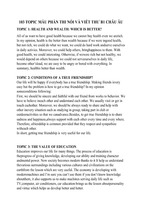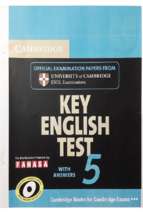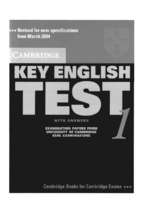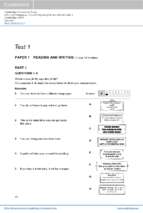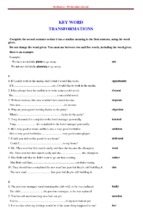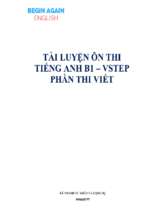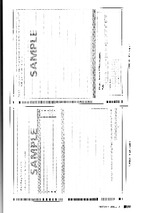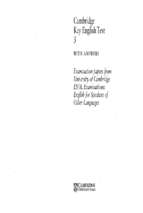VIETNAM NATIONAL UNIVERSITY, HANOI
VIETNAM JAPAN UNIVERSITY
PHAM THI OANH
COST–BENEFIT ANALYSIS OF MIXING
GREY AND GREEN INFRASTRUCTURES
TO ADAPT TO SEA LEVEL RISE IN
MEKONG RIVER DELTA
MASTER’S THESIS
Hanoi, 2020
VIETNAM NATIONAL UNIVERSITY, HANOI
VIETNAM JAPAN UNIVERSITY
PHAM THI OANH
COST–BENEFIT ANALYSIS OF GREY
AND GREEN INFRASTRUCTURES TO
ADAPT TO SEA LEVEL RISE IN
MEKONG RIVER DELTA
MAJOR: CLIMATE CHANGE AND DEVELOPMENT
CODE: 8900201.02QTD
RESEARCH SUPERVISOR:
Associate Prof. MAKOTO TAMURA
Dr. NGUYEN VAN QUANG
Hanoi, 2020
Pledge
I assure that this thesis is the results of my own research and has not been
published. The use of other research’s result and other documents must comply with
regulations. The citations and references to documents, books, research papers, and
websites must be in the list of references of the thesis.
AUTHOR OF THE THESIS
PHAM THI OANH
1
TABLE OF CONTENT
TABLE OF CONTENTS..................................................................................ii
LIST OF TABLE.............................................................................................iv
LIST OF FIGURE.............................................................................................v
LIST OF ABBREVIATIONS..........................................................................vi
ACKNOWLEDGMENT.................................................................................vii
CHAPTER 1. INTRODUCTION.....................................................................1
1.1. The necessary of the research....................................................................................................1
1.2. The research questions and hypotheses......................................................................................2
1.2.1. The questions of research........................................................................................................2
1.2.2. The hypotheses of research......................................................................................................2
1.3. Research objectives and tasks.....................................................................................................2
1.3.1. Research objectives.................................................................................................................2
1.3.2. Research tasks.........................................................................................................................3
1.4. Scope of the research..................................................................................................................4
1.5. Research Methods......................................................................................................................4
1.6. Framework of the Master’s thesis...............................................................................................5
1.7. Overview of research in Vietnam and international....................................................................5
1.7.1. Climate change and climate change impact............................................................................5
1.7.2. SLR and SLR impact in the 21st century...................................................................................6
1.7.3. Adaptation strategies...............................................................................................................8
1.7.4. Model assess the SLR impact and adaptation effectiveness...................................................12
1.7.5. MRD natural condition..........................................................................................................14
1.7.6. SLR impact in MRD...............................................................................................................15
1.7.7. Adaptation strategies in MRD...............................................................................................17
1.7.8. Research gap.........................................................................................................................18
CHAPTER 2. METHODOLOGY...................................................................20
2.1. The history of CBA and reasons for CBA................................................................................20
2.2. Outline the methodology.........................................................................................................22
2.3. Costbenefit analysis model.....................................................................................................22
2.4. Data.........................................................................................................................................27
2.4.1. Inundation data.....................................................................................................................30
2
2.4.2. SocioEconomic Scenarios....................................................................................................31
2.4.3. MRD data..............................................................................................................................32
2.5. Estimate costs of adaptation options........................................................................................32
2.6. Estimate benefits of adaptation options...................................................................................33
2.6.1. Estimate the economic damage of dryland loss can be avoid................................................33
2.6.2. Potential affected population by SLR....................................................................................34
2.7. Applying ArcGIS software......................................................................................................34
2.7.1. Data preparation...................................................................................................................34
2.7.2. Data analysis.........................................................................................................................35
CHAPTER 3. RESULTS................................................................................37
3.1. Socioeconomic damage of SLR without adaptation................................................................37
3.1.1. Identify the inundation area...................................................................................................37
3.1.2. Population at risk from SLR..................................................................................................39
3.1.3. The economic damage without adaptation............................................................................41
3.2. The economic loss in the different adaptation scenarios..........................................................44
3.2.1. The potential inundation area with adaptation......................................................................44
3.2.2. The economic damage with adaptation.................................................................................46
3.3. Cost of adaptation options.......................................................................................................46
3.4. Cost benefit analysis of mixing grey and green infrastructure.................................................49
3.5. Comparison of mixing grey and green infrastructure with other adaptation option.................50
3.6. Sensitivity analysis...................................................................................................................53
3.6.1. Change in discount rate.........................................................................................................53
3.6.2. Change in width of the mangrove belt...................................................................................54
CHAPTER 4. DISSCUSSION AND RECOMMENDATION.......................56
4.1. Summary..................................................................................................................................56
4.2. Limitation of the research and future work...............................................................................58
4.3. Recommendation......................................................................................................................59
CHAPTER 5. CONCLUSION........................................................................61
5.1. Impact of SLR on the Mekong Delta region.............................................................................61
5.2. Solutions to adapt to SLR.........................................................................................................61
REFERENCES................................................................................................63
APPENDIX.....................................................................................................67
3
LIST OF TABLE
Table 2.1: Cost and benefit of adaptation solution to reduce the damages due to
inundation by SLR in MRD, Vietnam.....................................................................26
Table 2.3: Data sources and description..................................................................29
Table 3.1: The unit cost of land use by SSP15.......................................................44
Table 3.2: Unit cost of adaptation options using dikes and mangrove in 2010
(million US$/m)......................................................................................................50
Table 3.3: Present value of the cost and benefit in different option (discount rate =
3%).......................................................................................................................... 53
Table 3.4: Change in NPV and BCR in with discount rate = 8%............................56
Table 3.5: Change in NPV and BCR with discount rate = 10%..............................56
Table 3.5: Present value of the cost and benefit with the change in the mangrove
width (discount rate = 3%)......................................................................................57
4
LIST OF FIGURE
Figure 1.1. Structure of the research..........................................................................3
Figure 2.1: Analytical framework of research.........................................................24
Figure 2.2: Costbenefit analysis model..................................................................25
Figure 2.3: The potential inundated area in MRD by SLR in 2100.........................32
Figure 2.4: World population and GDP in different SSP scenarios (Source: IIASA,
2018)....................................................................................................................... 34
Figure 3.1: The potentially inundated area by land use in MRD in the 2020, 2050,
2100 respectively.....................................................................................................39
Figure 3.2: Potentially inundated area due to SLR in MRD in the 21st century.......39
Figure 3.3: Land use of potentially inundated areas due to SLR in 2100 in MRD. .40
Figure 3.4: The potentially inundated by districts in MRD.....................................41
in 2020, 2050, 2100 respectively.............................................................................41
Figure 3.5: Total population at risk from SLR in MRD in 21st century...................42
Figure 3.6: Economic losses due to SLR in MRD in the 21st century......................46
Figure 3.7: Comparison of land use loss due to SLR in MRD with and without
adaptation solution (km2/year).................................................................................47
Figure 3.8: The damage cost of SLR with different adaptation option (no discount
rate).........................................................................................................................48
Figure 3.9: Net present value and Benefit cost ratio of mixing grey and green
infrastructure...........................................................................................................51
5
Figure 3.10: Cost contribution of mixing grey and green infrastructure..................52
Figure 3.11: Cost of adaptation options under SSP15 without discount rate..........53
Figure 3.12: BCR in different adaptation options under SSP15............................55
Figure 4.1. The urgency of coastal protection.........................................................62
LIST OF ABBREVIATIONS
BCR: Benefit Cost Ratio
CBA: Cost Benefit Analysis
CPMD: Coastal Protection for the Mekong Delta
IPCC: Intergovernmental Panel on Climate Change
MRD: Mekong River Delta
MONRE: Ministry of Nature Resources and Environment
NPV: Net Present Value
RCP: Representative Concentration Pathway
SSP: Share Socioeconomic Pathway
6
ACKNOWLEDGMENT
I would like to express my respecting to Assoc. Prof. Makoto Tamura who
introduced me to this exciting topic and supervising me during this time. My thanks
also go to Dr. Nguyen Van Quang for his comments during this thesis work. Their
comment and essential enabled me to complete this study on time. My warm thanks
also go to members of the Master of Climate Change and Development office for
their relentless supporting during this time. Finally, my grateful acknowledgment to
my friends and family for their recommendations, suggestions and supportive of my
study in VJU.
7
CHAPTER 1. INTRODUCTION
1.1.
The necessary of the research
Climate change is one of the most important global issues in the 21st century.
It affects not only environmental problems but as well economic and social
problems and instability in the future. Sea level rise (SLR) is one of the signs of
climate change, even though there is a very small change in sea level, it has a great
impact on other factors such as hydrological or extreme events such as storms,
hurricanes or droughts. In addition, SLR causes widespread and irreversible
flooding in coastal areas, causing migration to other lands, affecting social security
and food security as well as economic growth, environmental issues in coastal areas
and also other areas.
Vietnam is one of the countries most affected by climate change, including
SLR. The Mekong river delta (MRD), the largest delta region in Vietnam and the
main foodproducing region, has been affected by SLR in recent years. According
the scenario of climate change and SLR in 2100 of MONRE (Ministry of natural
resources and environment), with 1m of SLR by the end of the 21st century, nearly
50% of this area will be completely inundated. It is very influential that more than
20 million people living here and their livelihood, living standards and social
welfare may be affected. It is necessary to identify the physical damage, economic
damage and other factors for choosing the appropriate adaptation solution.
Because the SLR impact is uncertain, in conjunction with socioeconomic
development trend in the 21st century, it is difficult to evaluate the damage due to
SLR to the mainland. At present, there is little study focusing on the impact of SLR
taking the socioeconomic scenarios, especially in the MRD region – the 3rd largest
delta in the world. Therefore, this study was conducted to fill the research gap and
to contribute information for choosing an appropriate adaptation solution for this
area.
1
1.2.
The research questions and hypotheses
1.2.1. The questions of research
This study has the main objective of answering the question “Can mixing
grey and green infrastructure be a good solution to adapt to SLR in MRD?”
To answer the central research question, the research address to answer
following questions:
Question one: What is the area inundated due to SLR in the Mekong delta
especially with largescale land use areas?
Question two: How many people in MRD might be affected by SLR in 21st century?
Question three: How much the cost of the damage of the land loss due to SLR?
Question four: What is the effect of mixing grey and green infrastructure by CBA?
Question five: Does mixing grey and green infrastructure has more effectiveness
than other adaptation option?
1.2.2. The hypotheses of research
The hypothesis is mixing grey and green infrastructure has the greater benefit
than the cost to set up this system (the highest effective compare with other
adaptation option) and it can be a good way to apply in MRD to adapt to SLR.
1.3. Research objectives and tasks
1.3.1. Research objectives
To answer these research question, my research objectives are:
Objective one: Address the potential inundated area by SLR in MRD in land
use type and administrative area based on SLR scenarios.
2
Objective two: Evaluated and estimated the potential impact of SLR in MRD
by the value of land loss and the population affected based on the different
socioeconomic scenarios in 21st century?
Objective three: Estimate the cost of mixing grey and green infrastructure
when applying in MRD and calculate the effective of grey and green
infrastructure by cost benefit analysis.
Objective four: Compare the effective of grey and green infrastructure to
other adaptation solution.
1.3.2. Research tasks
Literature
review
Set up the
theorical
framework
and
analytical
framework
for the
research
Assess and
estimate the
socioeconomic
damage of
SLR in MRD
Calculate
the cost of
the mixing
grey and
green
infrastruct
ure when
apply in
MRD
Apply costbenefit
analysis to
get the most
effective
adaptation
option for
MRD
Figure 1.1. Structure of the research
This study is conducted based on five main steps as in Figure 1.1:
Literature review: conduct a search and review of national and international
studies on the topic of the impact of SLR and analyse adaptive solutions, thereby
identifying research gaps and addressing issues that the research will focus on
solving.
Set up the theoretical framework and practical framework: after the literature
review, the establishment of a theoretical basis and the adaptation solution have
been applied to adapt to SLR for conducting the impact assessment of SLR and
evaluate the effectiveness of adaptation solutions in MRD.
Carry out evaluation and estimation of damage caused by SLR by identifying
the economic and social impacts of SLR to the Mekong Delta region.
3
Assess the costs of mixing grey and green infrastructure to adapt to SLR in
MRD.
Cost benefit analysis: Based on the results from previous step, benefit cost
analysis is conducted to evaluate the effectiveness of mixing grey and green
infrastructure.
1.4. Scope of the research
In general the research tries to assess the impact of SLR in MRD aiming to
calculate the effectiveness of the grey and green infrastructures. On the other hand,
to confirm the effectiveness of mixing grey and green infrastructures, the research
will also compare this solution with other solutions including current applications.
In terms of content: The study will focus on estimating the damage value of dry
land loss due to the impact of mean SLR, and estimate the population affected
by this impact does not include other impacts such as SLR to coastal and marine
ecosystem service, infrastructure and economic activities. The effects of local
extreme events are not within the scope of this study.
For adaptation measures, the study will focus on analysing the effective of
mixing grey and green infrastructure and after that compare the effective of
itself with other adaptation solution including the current adaptation was
applying in MRD. Currently, the Mekong Delta is applying the solution to build
sea dikes in combination with mangrove to protect the mainland from the effects
of SLR. The study will compare this solution with the solution of lifting and
constructing concrete dikes and alternating concrete dikes and mangrove in the
coastal areas of the Mekong Delta.
In terms of time: The study will evaluate the impact of SLR in the 21st century
under the SLR scenario provided by Tamura et al., (2019) and socioeconomic
development scenarios SSPs (Share Socioeconomic Pathway). The study does
not apply forecasts for longer time periods due to the volatility and uncertainty
of the above factors.
4
Regarding the scope of space: The scope of the research space of the topic is the
region of the Mekong Delta of Vietnam, including 13 provinces and cities
directly under the region as prescribed by the Vietnam government.
1.5. Research Methods
Methods of collecting information: The study was conducted based on
secondary data gathered based on articles and reports of the Government of
Vietnam and international organizations for SLR impact analysis to the Mekong
Delta and estimate the cost of implementing adaptation measures.
Methods of data analysis: The thesis uses the benefit cost analysis method to
evaluate the effectiveness of mixing grey and green infrastructure.
1.6. Framework of the Master’s thesis
Figure 1.6: Logical framework of the research
Figure 1.6 presents the logical framework of the research. To estimate the
Socioeconomic impact of SLR in MRD, the inundation area will be identified by
applying GIS. The potential dryland loss and the population affected will be
evaluated by different Socioeconomic scenarios. Next, adaptation options – mixing
grey and green infrastructure will be applied to reduce the inundation damage.
Finally, the effectiveness of the mixing grey and green infrastructure will be
assessed by applying CBA in the various socioeconomic scenarios.
5
1.7. Overview of research in Vietnam and international
1.7.1. Climate change and climate change impact
Climate change is the global issue in 21st century. It was defined as “a change
in the state of the climate that can be identified (e.g., by using statistical tests) by
changes in the mean and/or the variability of its properties and that persists for an
extended period, typically decades or longer.” (Field et al., 2014). The recorded
data present a dramatically changing of the global climate since the middle of 20 th
century. It was shown on these evidence: the rise of the global mean temperature,
the warming of the oceans, the reduction of the ice sheets in the Greenland and
Antarctic, the retreating of the glacial around the world, the decreased of snow
cover in the Northern Hemisphere, the rising of the global mean sea level, the
increasing of the extreme events, etc.
The global warming is the main reason of climate change caused by the
greenhouse effect. However, there is high agreement that the human activities are
the main reason which maximizes the greenhouse effect causing the rising of global
temperature and the rapid climate change. This process is immutable and will
impact for the continues centuries.
The impact of climate change is happening which is significantly affected
both on human and environment in global scale. It is expected to continue and
intensify in the future. One of the worst impact of climate change is that the melting
of the ice sheet at the poles causes an increase in the average sea level leading to the
inundation risk in the coastal areas, especially some areas may disappear
completely. Climate change also increases the appearance of the extreme event such
as drought, flooding, hurricane or storm. Moreover, it also has strong effect on the
environment, ecological balance, causing biodiversity loss and destroying the food
chains. These impacts will create the economic damage and social unrest, especially
in the developing countries. Therefore, it is necessary to reduce the effect of climate
change.
6
1.7.2. SLR and SLR impact in the 21st century
SLR is one of the main results of climate change. Although it is changing
during the history of Earth, it becomes faster than the previous history under the
impact of anthropogenic climate change. Since the 1990s the average global sea
level has increased 3mm/year and is still rising during the 21st century (Field et al.,
2014). Until the last 21st century, the global mean sea level may rise 0.31.2m under
using the different RCPs scenarios (Kopp et al., 2014) and 0.281.31m with the
different concentration scenarios (Mengel et al., 2016). According to the IPCC AR5
(Field et al., 2014), the global mean sea level has increased 5m during the last 3
million years and still increasing. It is predicted that global mean sea level will rise
2682cm at the end of this century. Jevrejeva et al. (2016) also estimate that
medium SLRs may continue up to 5263cm with the global temperature rise 1.5
2°C by 2100 respectively. On the other hand, Nauels et al. (2017) has estimated that
in 20812100 the mean sea level will rise 519mm per year based on each Share
Socioeconomic Pathways scenarios (SSPs). This phenomenon is caused by three
main reasons under impacts of climate change: thermal expansion, melting glaciers
and loss of Greenland and Antarctica’s ice sheets.
It is a challenge to identify the direction socioeconomic impact of SLR on
coastal area. The impacts depend on the “geologic setting and physical and
ecological processes operating in that environment” (FitzGerald et al., 2008). It
does not only affect the change of coastal habitat but also inland, causing extreme
weather events such as storms or floods to become more frequently and stronger. In
addition, it may also lead coastal soil erosion, aquifers and saline agricultural land,
reducing the habitat of coastal flora and fauna. These impacts are the main causes
affecting human activities in the coastal area, forcing people to migrate to other
areas causing economic and social instability. It may lead to the changes in land use
when the area of land is narrowed, cause of the economic conflicts and social unrest
(Goldemberg et al., 2000; Field et al., 2014).
7
Asuncion & Lee (2017) pointed out that SLR will be impacted by economic
growth, migration, and tourism. European Climate Research Alliances has
mentioned that SLR will be a threat to human and infrastructure in the coastal area
which is in the lowlying coastal regionsliving area of 10% world population
(about 0.7 billion people). Moreover, it also has impacts on the biodiversity,
ecosystem and creates a more extreme events such as flood, inundation, storm or
hurricane. Mimura (1999) showed the vulnerabilities of island nations in South
Pacific to SLR. Inundation and flooding can have a major impact on these countries
which is located in the low elevation, leading to changes in population growth and
migration of small islands to bigger islands for less risk. These areas need to focus
on climate change adaptation solutions rather than mitigation. Ericson et al. (2006)
has conducted an analysis on the effects of SLR on 40 river deltas in the world. The
results suggested that SLR could be a major cause of flooding and erosion in these
area that will affected on 8.7 million people and 28,000 square kilo meters of plain
by 2050. FitzGerald et al. (2008) focused on the inundated impact by SLR to the
island and low land area, especially in the large river delta or high population
density. Neumann et al. (2015) estimated the total population in the coastal area in
global scale and the number of people likely to be affected by the sea level in the
future. The results show that the number of population exposed by SLR increases in
proportion to population growth in coastal areas, of which Vietnam is one of the
countries with the highest total population in this area. Besides that, the total
population facing with SLR might be one of the highest countries in Asia along
with China, India, Bangladesh, Indonesia in 2060.
The cost of damage by SLR in the coastal area is an important element to
calculate the total damage of climate change in the future, contributed to the
designing and choosing climate policy (Asuncion & Lee, 2017).
1.7.3. Adaptation strategies
The concept of adaptation mentioned by the IPCC in its first reports
(McCarthy & IPCC, 2001) is defined as “adjustments in human and natural
8
systems, in response to actual or expected climate stimuli or their effects, that
moderate harm or exploit beneficial opportunities”. Each impact of climate change
on different subjects will have different adaptation measures. (Nicholls, 2015)
mentioned that adaptation to SLR should include activities that adapt to moderate
and extreme increases. He also pointed out that the current major adaptation
activities focus on responding to events and disasters rather than forecasts for a
longterm, active adaptation plan.
Adaptation strategies can be divided into three main ways (IPCC, 1990;
Bijlsma et al., 1996; Klein, 1999;Linham & Nicholls, 2010):
Retreat all the human system is driven deep into the land through
changing plan, develop policies and migration activities.
Accommodation mitigate impacts by adjusting human activities in
coastal areas through land use changes, early warning systems, flood and
insurance adaptation measures.
Protect system infrastructure has been built in the coastal area to reduce
the impact of SLR. These protect strategies can be hard infrastructure or
soft armouring.
The adaptation strategies should not only focus on the initial impacts but also
carry out the potential impact in the future. On the national or local scale, it is
necessary to consider the complex interaction between humans and the natural
system on the coastline. Therefore, it is essential to ensure the longterm
effectiveness and to consider carefully.
Based on the main solutions to adapt to SLR, many studies have been carried
out on a global and regional scale to calculate the feasibility of each solution in
practice. Hallegatte et al., (2013) suggested that adaptation measures should be
applied and upgraded to achieve the goal for minimizing the potential adverse
impacts of SLR in the future. In fact, the SLR repute is heterogeneous across areas
9
due to topographic conditions, other factors such as erosion and local wave model
(Gornitz, 1991). Klein & Nicholls (1999) confirmed the complexity and the
necessary for many solutions to adapt to SLR in coastal areas. To date, the previous
study in national and local scale in European countries revealed the higher
adaptation cost in the higher level of risk or very high adaptation standard. There is
a large number of published studies (e.g.Diaz, 2008; Hinkel et al., 2010 ; Lincke &
Hinkel, 2018) confirmed the effectiveness of protection solution to adapt to SLR.
For some developing countries, adopting adaptation solutions in equivalent to those
of the Netherlands or the Gulf of Mexico is not affordable (FitzGerald et al., 2008).
For some areas, the only solution to adapt to SLR is to retreat from lowlying
coastal areas to higher areas.
Indeed, adaptation strategies are often aggregated from more than one
approach, and most assessments currently focus on retreat or protection without
considering accommodation.
The protection strategies have been used for a long term to minimize the
impacts of flooding due to the increase in the water of rivers or storm surge. They
can be applied in various options such as hard engineering techniques such as
seawalls, breakwaters, or revetments. In recent years, there is a new trend focusing
on biological solutions like using natural protection which can bring more natural
benefits than traditional hard infrastructure solutions. It also has shown the effects
without disturbing the natural coastal environment throughout our development
history. The subtropical and tropical regions have emphasized the current trend of
protecting and restoring coastal mangrove to the impacts of nature and humans.
Grey infrastructure
Grey infrastructures are defined as artificial constructions and structures such
as embankments, reservoirs, canals, etc which have builtin the river basin or
coastal areas (Browder et al., 2019). To adapt to SLR, the grey infrastructure can be
applied in the coastline including sea dikes, seawalls, groins, and other structure.
10
- Xem thêm -


